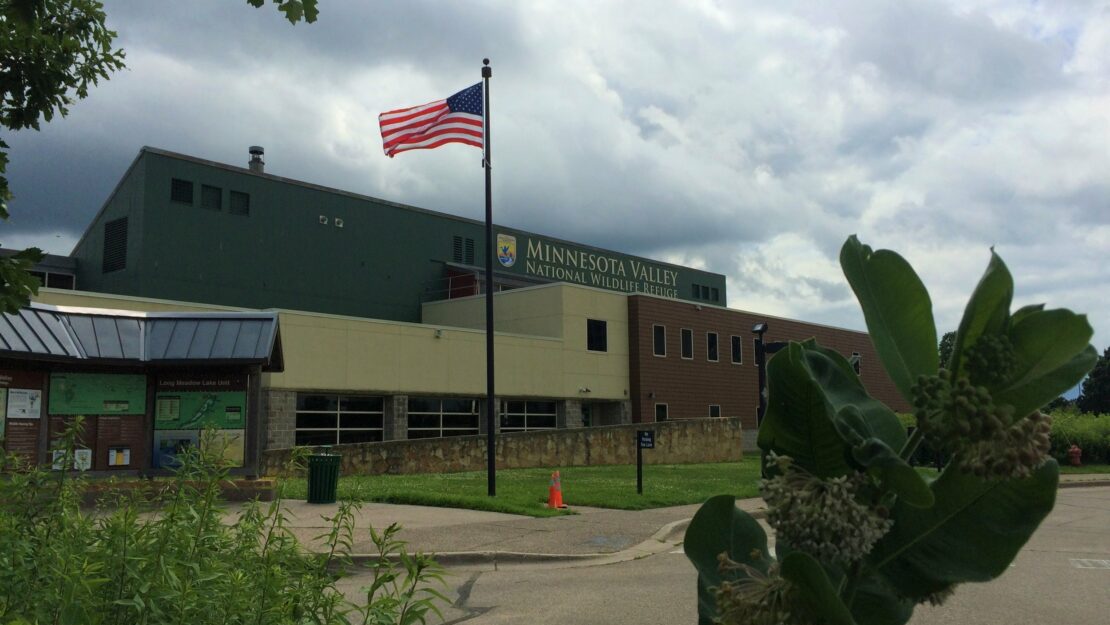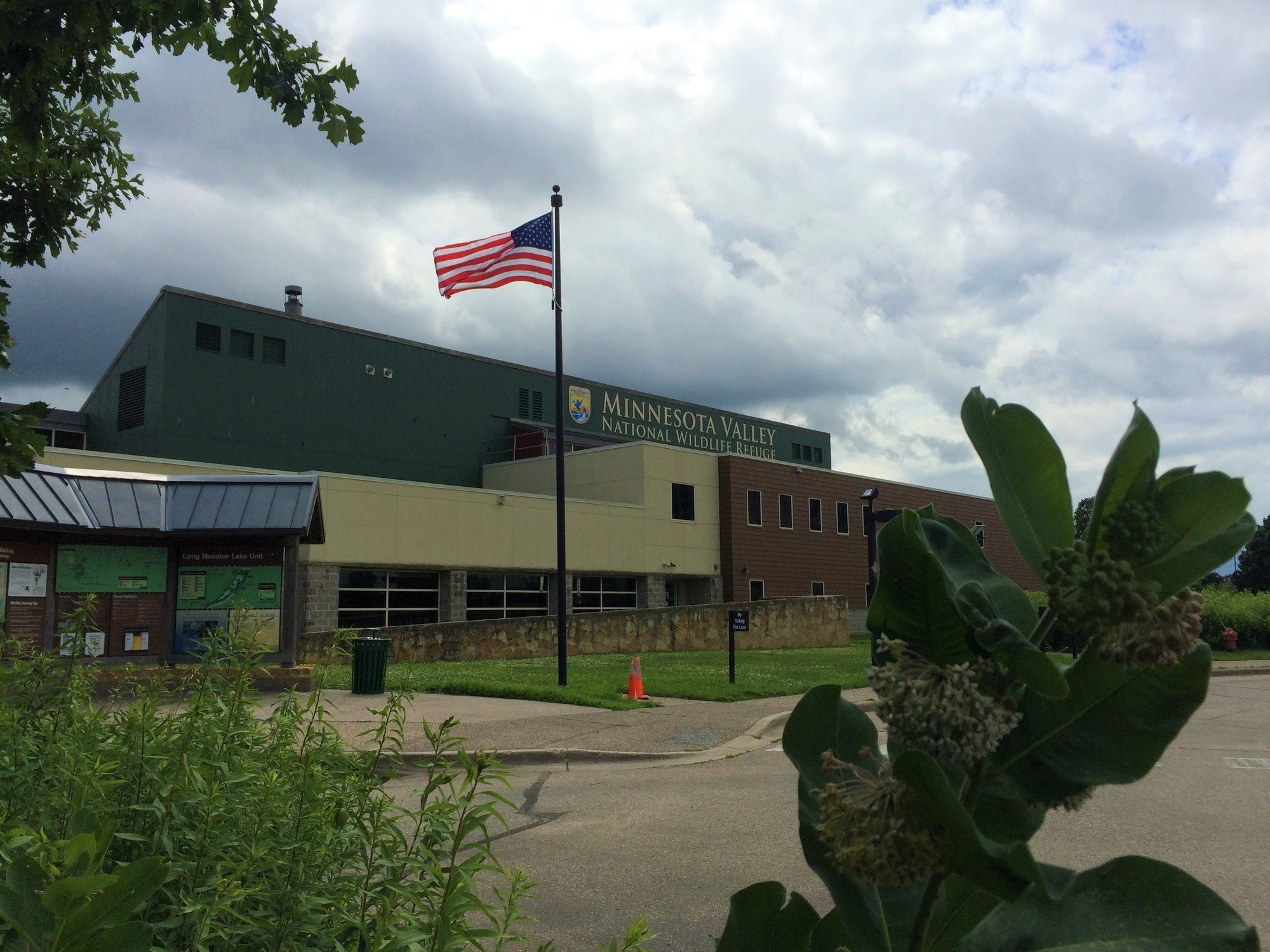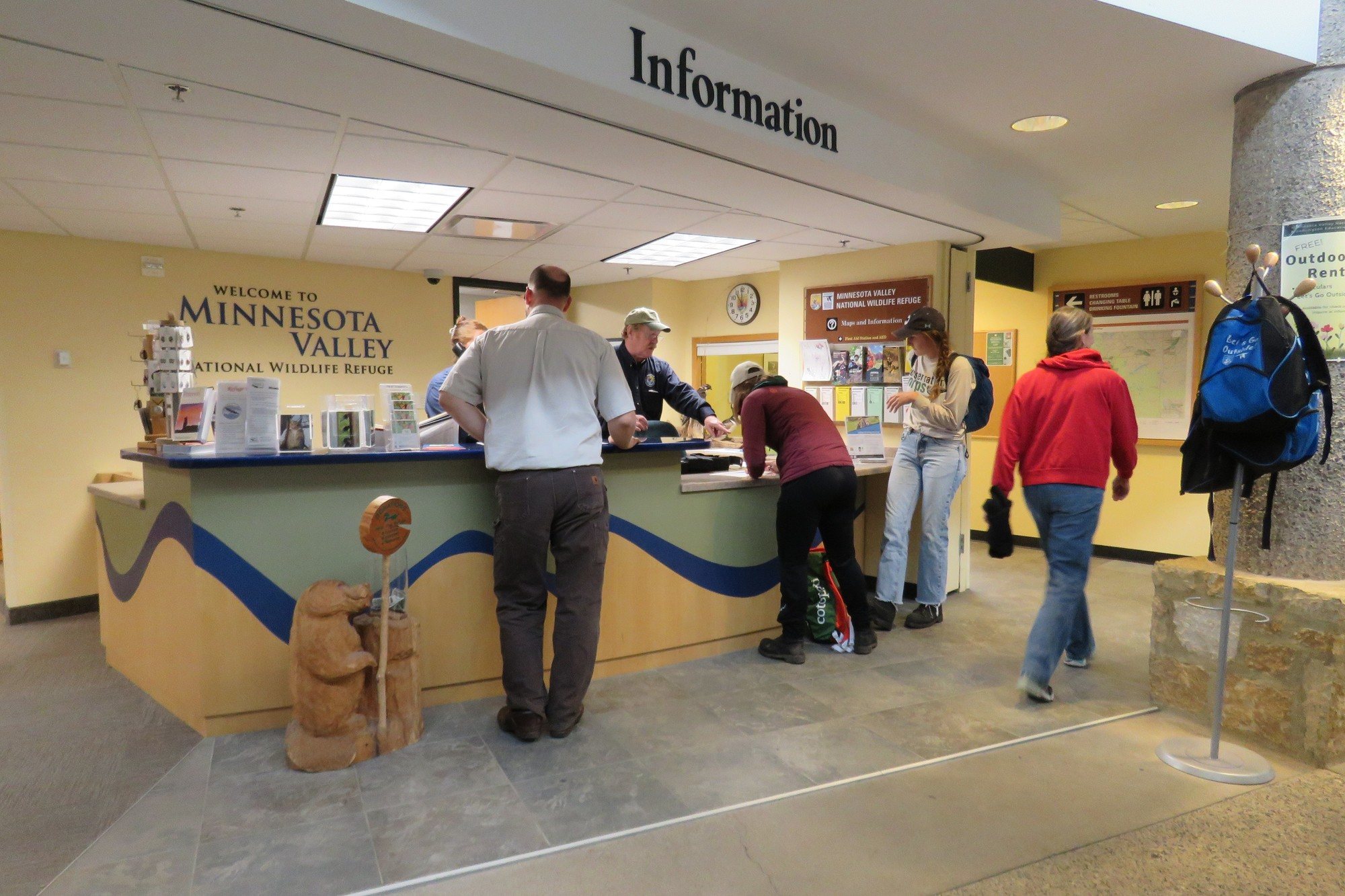For the continuing benefit of the American people

by Gina Hatch, visitor services intern/ AmeriCorps member with Minnesota Valley National Wildlife Refuge through Conservation Corps’ Individual Placement program

The Minnesota Valley National Wildlife Refuge headquarters and visitor center. Photo by Gina Hatch/USFWS.
The mission of the US Fish and Wildlife Service is a lofty one: working with others to conserve, protect and enhance fish, wildlife and plants and their habitats for the continuing benefit of the American people. Built into this mission is the premise that the public land protected by the Service is a resource not just available to the American people, but actually belonging to the American people. I remember feeling very purposeful as I took this down in my notes during day one of my training at Minnesota Valley National Wildlife Refuge. My supervisor went on to explain that, like all federal agencies, the Fish and Wildlife Service is an extremely hierarchical one, and this is because everything we do flows from and to the public; we operate in such a centralized manner because we conceive of the millions of residents of this country as a unified entity, sharing and stewarding the same resources.
I certainly liked the sound of these big ideas, but at the time I didn’t fully understand their implications or see them reflected around me. When I arrived to work at the refuge each morning, I didn’t suddenly feel like I had stepped onto precious national heritage connecting me to a vast network of protected land spanning the country. Nothing glowed. I didn’t feel the intention of the American public “flowing” through me. Or through the trees. Or through my cubicle.
Moreover, the notion that the refuge land belongs to the American people and is ours—each and every one of ours—to steward felt abstract and idealistic to me. To the casual observer, no one really seems to interact with the refuge differently than they would a local park or a nature center. In fact visitors constantly confuse us with the Minnesota DNR. What exactly could it mean to be a public servant at a federal site like Minnesota Valley, and what made this place so supposedly valuable to the American people?
Over my past year at the refuge, answers to this question have come to me gradually and from various directions. Recently I have found some of the best answers in our volunteers.
Minnesota Valley is a large refuge and we have an impressive cadre of volunteers who help out in many different capacities. In May we welcomed aboard several RV volunteers for the summer: adventurous retirees who parked their RVs on one of our more rural units and now effectively live on the refuge for the sole, generous purpose of helping us out. They each brought with them valuable experience and perspective from having volunteered at national parks and refuges across the country.
I’ve gotten to work especially closely with one volunteer who always impresses me with the energy and meticulousness she brings to each task. After a recent assignment to drive to the many trailheads across the refuge and stock them with trail maps, she returned with detailed notes about the cleaning and repair work she and her husband had done on our flood-weary kiosks, as well as a sharp-sighted list of things that still needed to be improved. She showed me pictures of her husband scraping mud out from the inside of a brochure box, making use of their own toolbox that they had brought along. She told me that all the kiosks could use a new coat of paint and assured me that she and the other volunteers could get it done (no need to leave it to our busy maintenance staff).
Once while I was working a front desk shift in the visitor center with this volunteer, a man stopped in to ask us some questions about the trails. He noticed the volunteer patch on her shirt and asked somewhat incredulously if she was really a volunteer. After she replied with an enthusiastic yes, he retorted, “Shouldn’t the feds be paying you for your work?” She hesitated briefly while searching for the right response. “Well, I’m at the point in my life where I don’t feel like I need to be paid,” she replied, “and I do this because I love the cause and I think it’s important.”
This exchange stuck with me, and it helped me start to wrap my brain around both the practical and symbolic importance of what our RV volunteers do. With no true obligation but simply the privilege of time and resources on their hands, they travel around America’s public lands, adopting each as a temporary home and then taking care to scrub mud off signs and pick up trash from trails. They are undeniable caretakers of the land—stewards of the shared resources that many of us forget to regard as our own. In short, they help bring the lofty mission of the Fish and Wildlife Service down to earth and give it life. All of our volunteers do.
And not only are they physical caretakers of our natural resources, but they are also enthusiastic liaisons, going out of their way to welcome others to the public lands that they have come to know and love. I’ve watched many of our volunteers—lucky enough to have traveled to dozens of refuges and parks over their lifetimes—give travel advice to visitors with as much detail and know-how as someone might give to a guest they were hosting in their own home. When it’s our older volunteers giving this advice, as it often is, these gestures strike me as especially symbolic: an experienced generation’s knowledge and love of this country’s vast resources being passed down to younger generations still early in their explorations. A shared environmental pride flowing through generations all experiencing the same wild wonders.
This perpetual sharing is possible because of the permanence and the democratic ownership written into the Service’s mission—the ideas that had seemed so nebulous to me at the start of my service. Since those first few days of training, Minnesota Valley, its staff, its volunteers, and its visitors have demonstrated to me the meaning of public land, and more specifically, the value of a unified national system of public land.
And while our national refuges and parks often fall short of being democratic and accessible resources for all American people, we can be sure these places will stick around to see us break down barriers and build a more equitable society. Our public lands will be here in perpetuity to evolve and thrive along with us.

Volunteers staff the visitor center front desk at Minnesota Valley National Wildlife Refuge. Photo by Gina Hatch/USFWS.